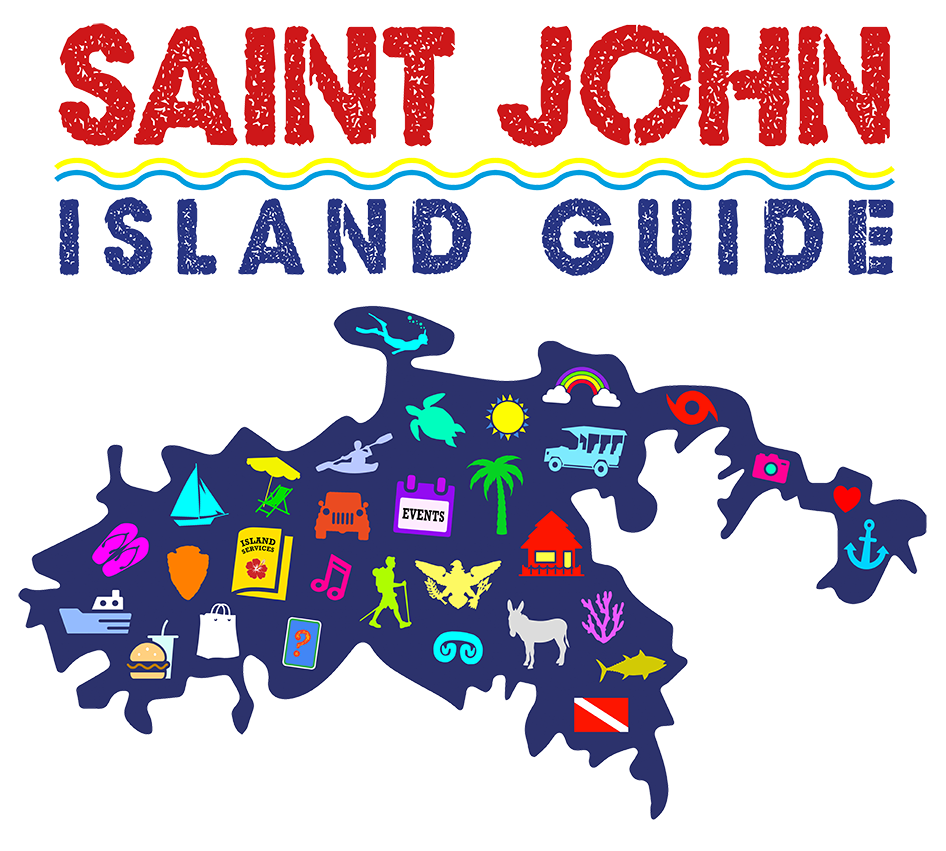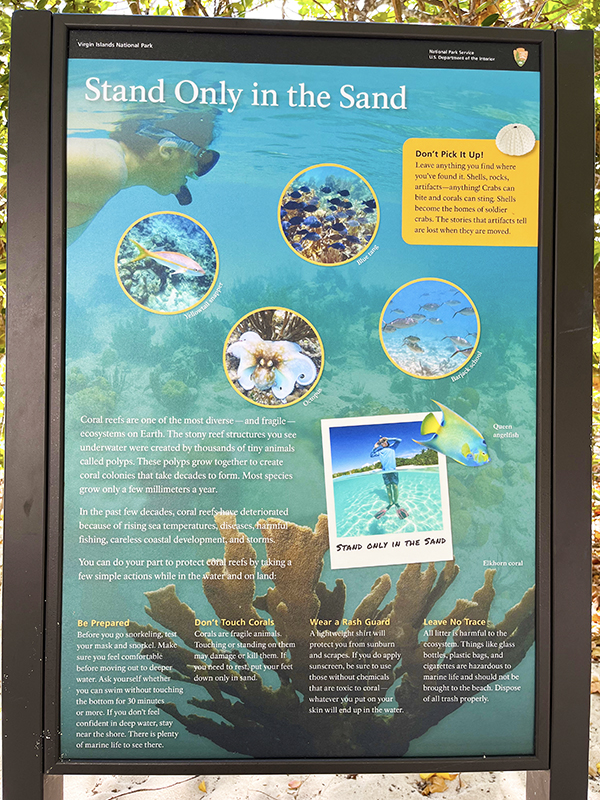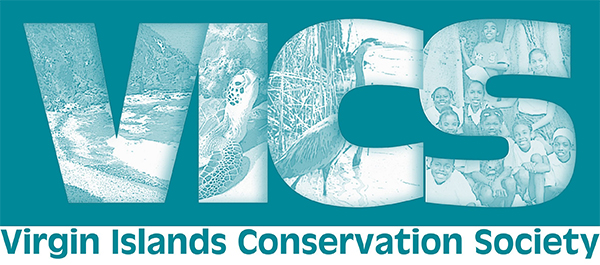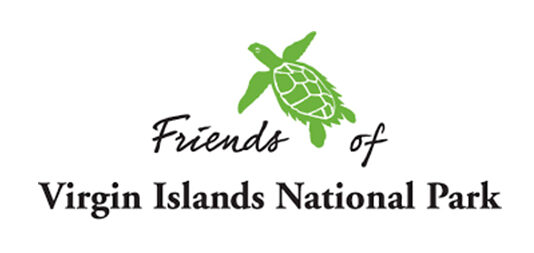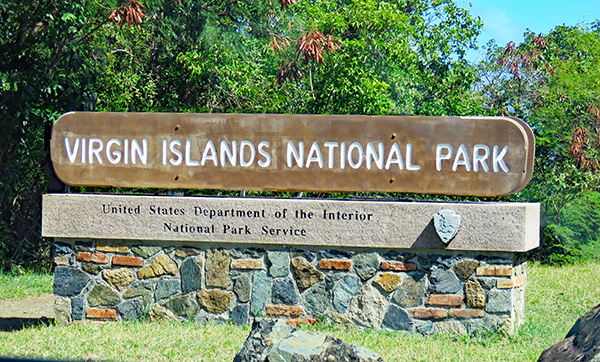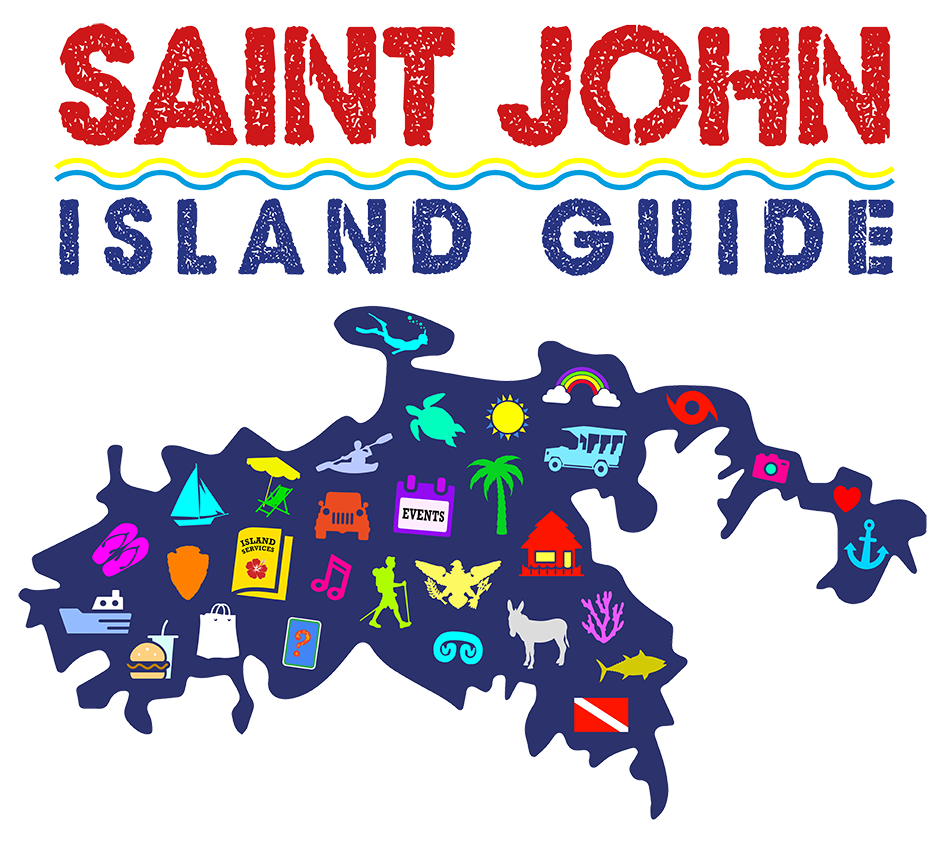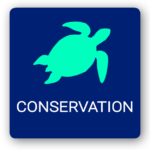

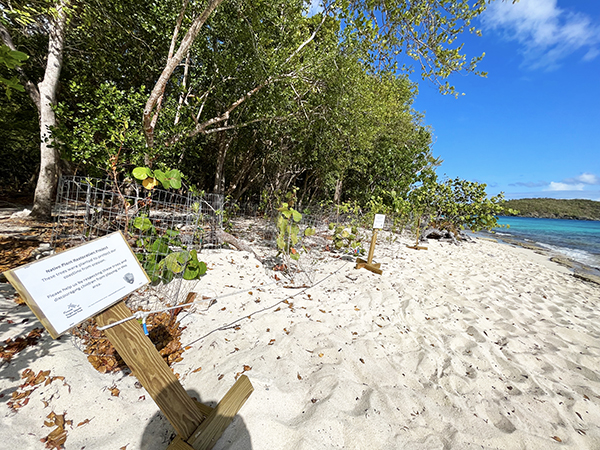
There are many people and organizations in the U.S. Virgin Islands and all around the world who are dedicated to helping with our coastal ecosystems, wetlands management, plant and wildlife habitats just so we all can experience the natural splendors of paradise on Saint John. The environmental outreach happens in many ways through the VI National Park, the U.S. Virgin Islands Conservation Society, Virgin Islands Nature Conservancy, Coral Bay Community Council, and the Friends of the Virgin Islands National Park, as well as many individuals volunteering with recycling, beach clean up and restorative projects, sea turtle projects, legislation, and so much more.
The Virgin Islands Sea Turtle Monitoring and Protection Program is managed by the Friends of the Virgin Islands National Park. This program helps protect the nests, facilitate research, and spread awareness about sea turtle conservation. Beach Monitoring is a big job for volunteers on island from June to November looking for any signs of nesting. Lots of conservation volunteering opportunities with the Friends of the VI National Park.
CONSERVE WATER
Here on Saint John, we rely heavily on the rain to provide water for our cisterns. There is only public water systems in the town of Cruz Bay. Otherwise, rooftop rainfall catchments is the major source of freshwater supply which feed the cisterns usually located under homes. Below are some suggestions to conserve water.
- Take Shorter Showers
- While showering, turn the water off when soaping up, shampooing, or shaving
- Never let water run while brushing teeth
- If it’s yellow, let it mellow, if it’s brown, flush it down
- Never flush anything down the toilet other than toilet paper
- Make sure to have full loads when dishwashing or laundering
- Purchase refillable water jugs instead of disposable plastics.
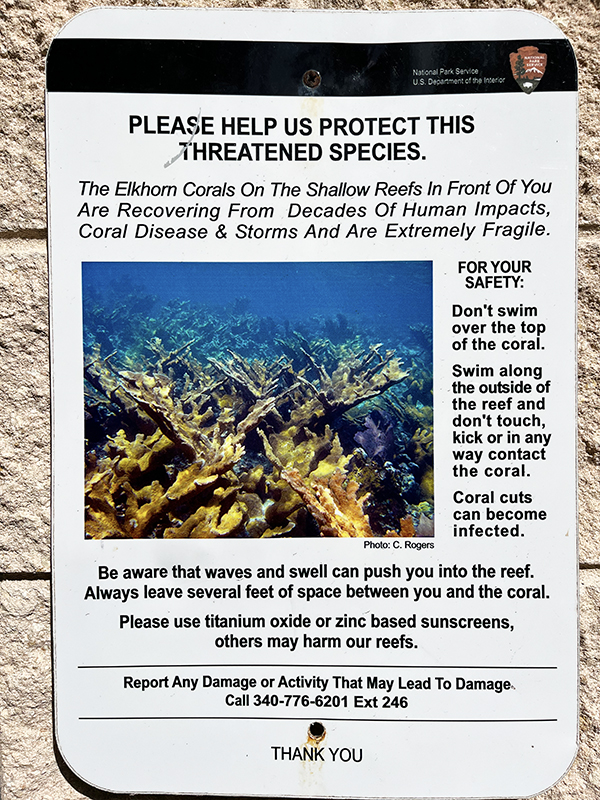
Informational signs are posted at the beaches about how to treat the environment with respect while you are hanging out on the beach. On the beach, there are Native Plant Restoration Projects signs as you will see wire around Sea Grapes and other native plants in order to restore them to their natural habitat.
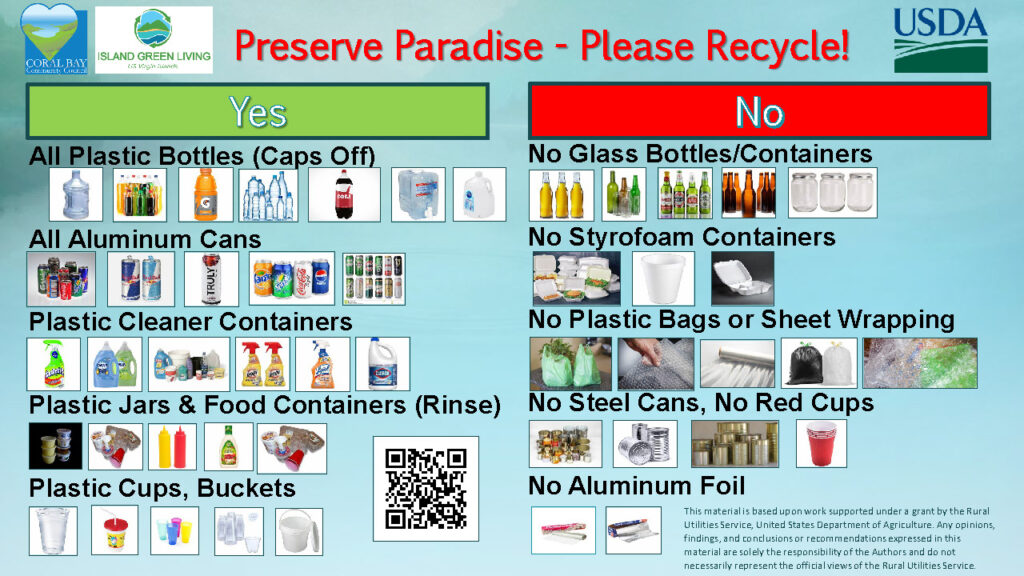
Island Green Living Association’s “reduce, reuse, recycle” vision has come to life on Saint John. Their mission is to transform the United States Virgin Islands into a net zero waste, carbon-neutral territory in order to protect the environment and ensure the health, welfare and economic security of the islands and its people. The very successful non-profit thrift store, the ReSource Depot, provides a place for locals to take household items and other things they no longer need making them available to others at a very affordable price. They also lead the helm when it comes to recycling efforts. You can now drop off recyclables across the island in many locations. They took part in the Reef-Safe Sunscreen legislation being implemented in the USVI to prevent the sale and use of products which impair our coral reefs and ecosystems.

The Coral Bay Community Council provides information on watershed management to improve water quality and protect coral reefs, and solid waste solutions such as where to take different types of trash, what types of recycling options you do have on island, and what to never put in the bins.
If you are a visitor on island, please feel free to see if there are any volunteering opportunities. Also, conserve as much water as possible, hang towels for future use, turn off air conditioners when not in use.
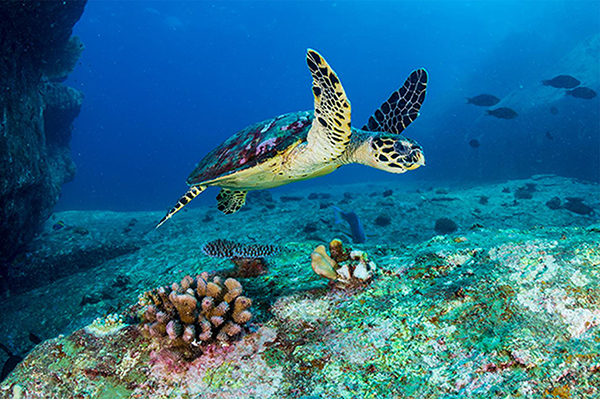
This below information is from a sign at Hawksnest Beach. Please look out for signs at the different beaches as each beach has different environmental concerns to be aware of. Thank you!
PLEASE HELP US PROTECT THIS THREATENED SPECIES
The Elkhorn Corals on the shallow reefs in front of you are recovering from decades of human impacts, coral disease and storms and are extremely fragile.
FOR YOUR SAFETY:
- Don’t swim over the top of the coral.
- Swim along the outside of the reef and don’t touch, kick or in any way contact the coral.
- Coral cuts can become infected.
- Be aware that waves and swell can push you in to the reef. Always leave several feet of space between you and the coral.
- Please use titanium oxide or zinc-based sunscreens (reef-safe), others may harm our reefs.
- Report any damage or activity that may leave to damage. Call (340) 776-6201 Ext. 246
DON’T PICK IT UP!
Leave anything you find where you found it. Shells, rocks, artifacts – anything! Crabs can bite and corals can sting. Shells become the homes of soldier crabs. The stories that artifacts tell are lost when they are moved.
Coral reefs are one of the most diverse – and fragile—ecosystems on Earth. The stony reef structures you see underwater were created by thousands of tiny animals called polyps. These polyps grow together to create coral colonies that take decades to form. Most species grow only a few millimeters a year.
In the past few decades, coral reefs have deteriorated because of rising sea temperatures, diseases, harmful fishing, careless coastal development, and storms.
You can do your part to protect coral reefs by taking a few simple actions while in the water and on the land:
BE PREPARED
Before you go snorkeling, test your mask and snorkel. Make sure you feel comfortable before moving out to deeper water. Ask yourself whether you can swim without touching the bottom for 30 minutes or more. If you don’t feel confident in deep water, stay near the shore. There is plenty of marine life to see there.
